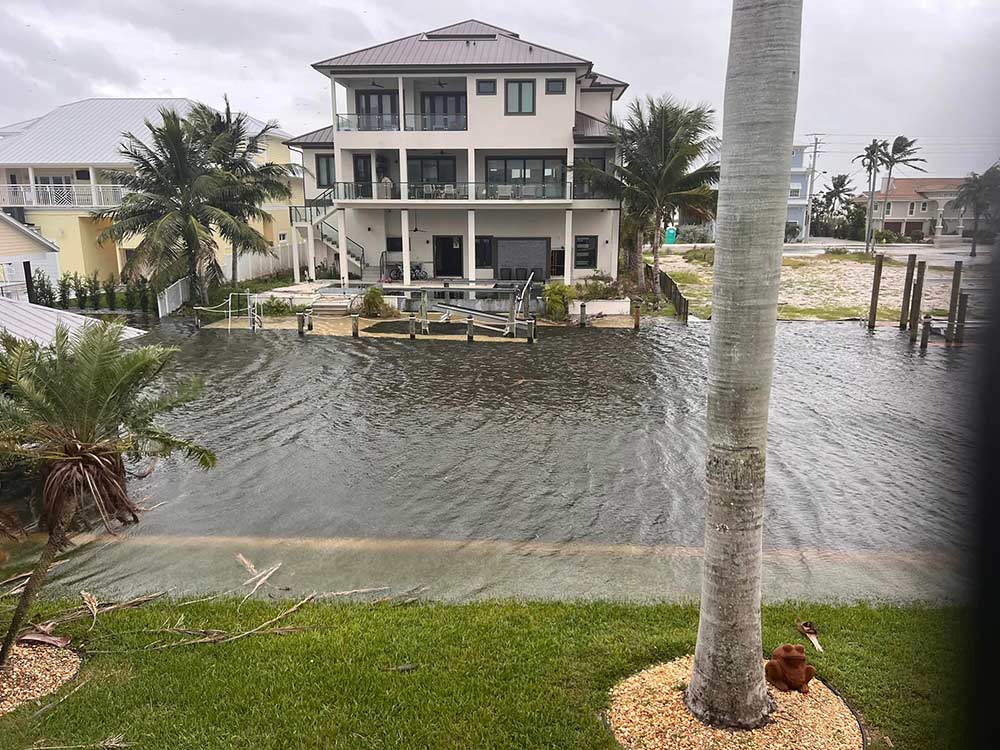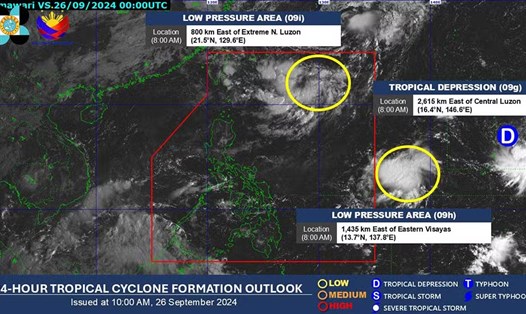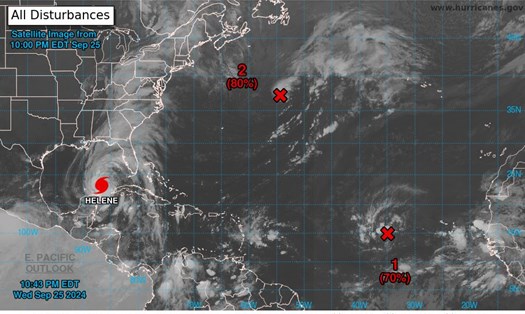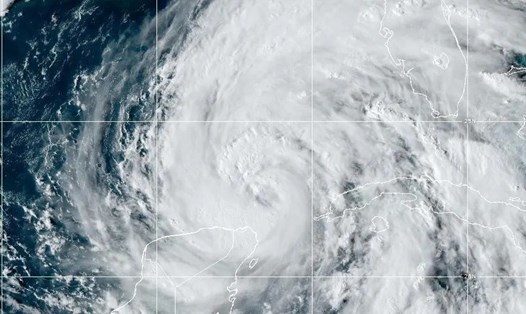Hurricane Helene strengthened into a Category 4 storm as it made landfall on the northwestern coast of Florida on the evening of September 26 (local time), AP reported. Local authorities widely warned of the risk of dangerous winds and heavy rain across the Southeast of the United States.
According to the US National Hurricane Center (NHC), the eye of the storm is currently about 145 km south of Tallahassee, Florida with winds of 225 km/h).
The storm is moving north-northeast at 24 mph and is expected to produce life-threatening storm surges as high as 20 feet in Florida's Big Bend area.

The National Weather Service in Tallahassee, USA, has issued a severe wind warning for the Big Bend area as the eye of the storm approaches. Authorities have advised people to take shelter in the deepest room of their homes for safety.
Hurricane and flash flood warnings have expanded to northern Georgia and western North Carolina. The governors of Florida, Georgia, Alabama, the Carolinas and Virginia have declared states of emergency in their states. More than 1 million people in Florida and 50,000 in Georgia are without power due to strong winds and heavy rain.
Florida Governor Ron DeSantis said forecast models show Helene will move farther east than previously forecast, heading straight for the Big Bend area.
Many people have been heeding mandatory evacuation orders stretching from the Panhandle south along the Gulf Coast in low-lying areas around Tallahassee, Gainesville, Cedar Key, Lake City, Tampa and Sarasota.
Federal authorities have deployed search and rescue teams as forecasters warn that rising floodwaters could pose a particularly “catastrophic” threat in Apalachee Bay.
Many colleges have canceled classes. Airports in Tampa, Tallahassee and Clearwater were closed on September 26 (local time). Nighttime curfews have been imposed in many cities and counties in south Georgia.

While Helene is expected to weaken as it moves inland, forecasters say strong winds and heavy rain are expected to move into the southern Appalachian Mountains, where mudslides are possible. Weather services also warn that much of the region could experience prolonged power outages and flooding.
University of Georgia meteorology professor Marshall Shepherd said Helene could be the worst storm to hit Atlanta in 35 years.
Helene is the eighth named storm of this year's Atlantic hurricane season. The National Oceanic and Atmospheric Administration (NOAA) has predicted the 2024 Atlantic hurricane season will be more severe than average, due to record-warming ocean temperatures.
In another development, Tropical Storm Isaac formed on September 25 (local time) in the Atlantic Ocean. The storm is forecast to strengthen as it moves east, potentially becoming a hurricane later this week.
In the Pacific, a tropical depression formed from Hurricane John re-strengthened into a hurricane on September 26 (local time), threatening areas of Mexico's west coast with flash floods and landslides.
Experts advise residents and visitors in affected areas to prepare emergency disaster response kits, follow instructions from local authorities and be ready to evacuate if necessary.
It is a good idea to have enough water and non-perishable food for at least 7 days, as well as medication and cash in case of a prolonged power outage.
Travelers planning to travel to the above areas during this time should consider canceling or postponing their trips to ensure their safety and have a complete travel experience.



